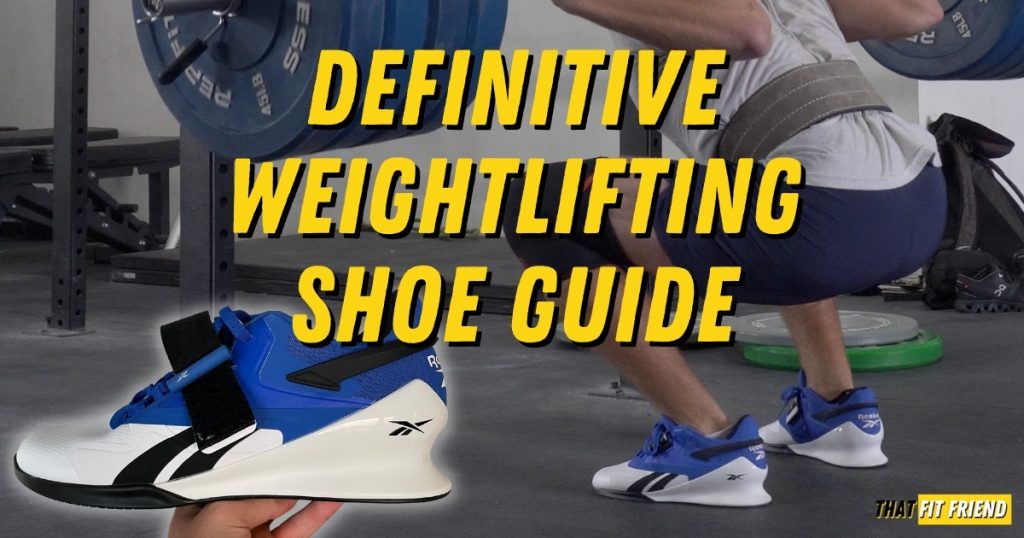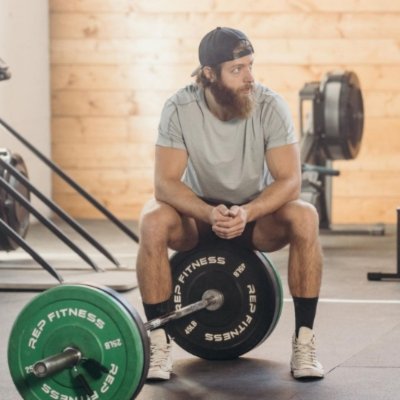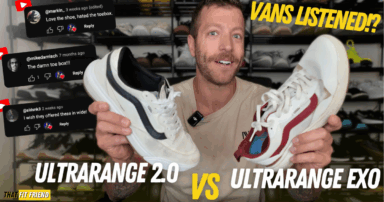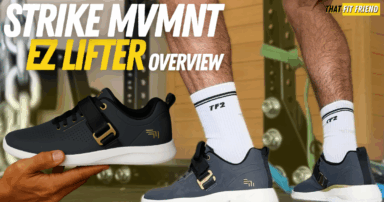Weightlifting shoes — also referred to as squat shoes — in the gym are similar to what cleats are on a soccer field. They’re equipment that can support specific exercises, strength sports, and performance output goals.
If you’re new to weightlifting shoes, then you likely have a lot of questions about whether you need them and what they do. Weightlifting shoes can be somewhat pricey, so it’s always a good idea to spend time researching them before blindly investing.
In my coaching opinion, it’s important to understand what exactly weightlifting shoes do for your performance. This knowledge can then help drive how you plan to use them and help you get the most out of them per your goals.
On the market for new weightlifting shoes? I’ve built a massive list of the market’s best weightlifting shoes. Every shoe featured in this list has been thoroughly tested and reviewed by me.
What Are Weightlifting Shoes?
Weightlifting shoes are shoes designed to support the sport of weightlifting’s demands. The sport of weightlifting involves the snatch and clean & jerk and a weightlifting shoe’s construction was originally made to promote lifting performance in these two exercises.
However, with the growth of strength sports, an improved understanding of biomechanics, and increased validity of multiple coaching methodologies and applications, weightlifting shoes are now dynamic tools for a range of lifters and strength sports athletes.
Weightlifting shoes are built with firm outsoles for increased stability, elevated heels that can better support lifting mechanics, and additional mid-foot security to help lock down the foot when moving weight.
Why Wear Weightlifting Shoes?
As stated above, weightlifting shoes are supportive pieces of strength equipment designed to promote performance in the sport of weightlifting and they support lifting mechanics in exercises like squats.
- Weightlifters will wear weightlifting shoes to support their performance in the snatch, clean & jerk, and high-bar back squat.
- Powerlifters typically opt for weightlifting shoes when their squat mechanics align better with the changes an elevated heel can produce. To add depth here, this is usually taller lifters or lifters who use more of a high-bar or hybrid bar setup.
- Recreational lifters will often use weightlifting shoes to support their squat performance, create a better quad-bias in different accessory exercises, and for machines when weightlifting shoes promote better positioning.
- CrossFit athletes usually bring weightlifting shoes in their gym bags for WODs that involve clean & jerks, snatches, and squats.
- Strongman athletes typically use weightlifting shoes for squats and log clean & presses.
The big takeaway is that weightlifting shoes are not limited to only strength sports athletes.
In fact, a lot of lifters can benefit from weightlifting shoes especially when these shoes promote better performance output per their anatomy and training needs.
As long as there’s a rationale behind their use, weightlifting shoes can have multiple purposes in the gym and this will be based on one’s goals, training style, and body type.
What Do Weightlifting Shoes Do?
When we elevate the heels when lifting with weightlifting shoes, we place the foot into plantar flexion. Plantar flexion is ankle extension, AKA the ankle action where we drive the toes down into the ground.
By placing the ankle into a degree of plantar flexion (extension) we then can create an environment that feeds better into dorsiflexion, or flexion at the ankle joint.

In short, a weightlifting shoe will put our foot into a plantar flexed position before lifting. This then allows us to squat with a more upright torso position due to the heel giving us something to sit back on.
Additionally, this heel elevation will put our knees into an environment in which they can track over the toes a little easier. This is why you can sometimes “feel” the quads more when wearing weightlifting shoes and squatting.
Lastly, if we can squat with a more upright torso and the knees tracking further over the toes, then we’ll often be able to also achieve a little more squat depth while feeling balanced and stable.
Who Should Wear Weightlifting Shoes?
There isn’t a “one-size-fits-all” answer regarding who should wear weightlifting shoes. Every lifter could technically benefit from weightlifting shoes depending on their training context and needs.
This does NOT mean that every lifter needs to go buy weightlifting, but more so, there’s no “right of passage” or singular type of person who always needs weightlifting shoes. They’re tools based on the context of your training.
For example, if your ankles lack dorsiflexion or you don’t feel balanced in your squat when achieving depth, then weightlifting shoes can be an awesome tool to use when working to achieve more squat depth.
Every Lifter Can Technically Benefit From Weightlifting Shoes
Generally, lifters maintain more upright torso positions when achieving greater degrees of hip flexion with an elevated heel. This is why it generally feels easier to hit adequate squat depth when wearing weightlifting shoes for some lifters.
Factor in loading and we’ve now added a level of balance and stability on top of the ankle mobility demands we require during various exercises and movements.
It’s fairly common knowledge that weightlifting shoes (AKA squat shoes) support squat performance, but that’s not all they’re limited to.
They can also assist in exercises like snatches, clean & jerks, split squats, lunges, and they can also be useful for some lifters with their body’s positioning and achieving greater ranges of motion on certain machines like the leg press and hack squat.
Weightlifting shoes are dynamic and shouldn’t be limited to just the sport of weightlifting. There’s a reason heel wedges are commonly used for supporting different lifting contexts and weightlifting shoes are essentially heel wedges that you wear on your feet.
That all being said and understanding their dynamic nature, who should wear weightlifting shoes?
- Weightlifting Athletes
- Powerlifting Athletes
- CrossFit Athletes
- Strongman Athletes
- Lifters who want a heel wedge for certain lower-body exercises
- Lifters who find weightlifting shoes help achieve better positioning on certain machine-focused exercises
At times, I hear some lifters say that weightlifting shoes are a waste of money and unneeded. This statement lacks context. As you can see by the above, when we use weightlifting shoes with intent and understanding we can get more out of them per our performance goals.
Do Beginners Really Need Weightlifting Shoes?
Does a true beginner need weightlifting shoes right away? Not necessarily. However, if an elevated heel can help a beginner learn squat mechanics faster and more efficiently, then they have plenty of use for this scenario.
In my coaching opinion, it’s always nice to have a pair of weightlifting shoes around just in case you need them. They’re like a lifting belt or a pair of soccer cleats, you’re not always going to use them for your performance, but having them around can be useful.
How Should Weightlifting Shoes Fit?
When sizing yourself for weightlifting shoes it can be a serious pain since sports apparel and shoe stores don’t carry them. Unlike cross-training shoes or general wear shoes, you’ll likely want your weightlifting shoes to fit fairly snugly.
The last thing you want is to be sliding around in your shoes when catching clean & jerks or hitting heavy squats. This is why I’m a fan of experimenting with different weightlifting shoes to find your perfect glove-like fitting pair.
How Tight Should Weightlifting Shoes Be?
I usually recommend lifters have around half an inch or 1.27 centimeters of room at the end of their shoe’s toe box. This usually gives your feet enough space without them feeling overly cramped.
Do Weightlifting Shoes Increase Ankle Mobility?
In short, no, but there’s more to it than that — let me explain. Weightlifting shoes do NOT magically increase ankle mobility by themselves. What they do is create an environment that allows you to feed better into dorsiflexion during lower-body squat variations.
When we begin lifting with a foot in a plantarflexed position we’re beginning our lifting with a slightly more forward knee position, thus why it feels easier to achieve greater ranges of motion with weightlifting shoes on.
Weightlifting shoes support squat performance and allow you to achieve greater ranges of motion by helping the knees track forward over the toe more, but they do not increase ankle mobility by themselves.
I do think weightlifting shoes can play a role in increasing ankle mobility, though, especially if they allow you to squat deeper with more stability. Their ability to support your balance and stability at deeper ranges could translate to ankle mobility without them.
This is why I love coaching and programming accessories like quad-biased lunges and split squats performed with flatter shoes in addition to squats where I know athletes and lifters are using weightlifting shoes.
Where Can I Buy Weightlifting Shoes?
It can be super frustrating when trying to buy weightlifting shoes at a store. For whatever reason, companies typically don’t provide major retail outlets with weightlifting shoe models to sell in-store.
My guess is since weightlifting shoes are so niche in their use that companies probably don’t have the inventory to stock every major retail outlet with a variety of sizes.
This is also the consensus and suggestion that my friends at Nike gave me when I asked them about this a few years ago. The lack of inventory would explain why most popular new models also sell out so quickly online.
That all being said, that doesn’t mean all hope is lost when it comes to finding pairs in-store. In fact, newer weightlifting shoes like the Nike Savaleos — a budget-friendly “functional” weightlifting shoe — can sometimes be found at stores like Dick’s Sporting Goods.
However, not every location seems to have them in this example, so before going in I would highly suggest calling to check their inventory. My advice is to call specialty stores in your area that carry weightlifting gear and lifting equipment first before going to visit.
Frequently Asked Questions (FAQ)
Q:Do you need weightlifting shoes?
Q:Do weightlifting shoes improve squats?
Weightlifting Shoe Takeaways
Weightlifting shoes can be beneficial to your lifting performance based on your individual needs and goals. It’s important to understand what weightlifting shoes do before investing because this can then help drive your intent of use to help you get the most out of your shoes.
If you have any additional questions about weightlifting shoes, feel free to drop a comment below or shoot me a message on Instagram (@that_fit_friend and @jake_boly).















Add a Comment